Dr. Lisa Sanders Solves Medical Mysteries and Answers Over 100 Emails a Day
November 27, 2019 | Filed in: Woman of the Week
If you don’t know Dr. Lisa Sanders from her hit Netflix show, Diagnosis—which helps people with mysterious medical mysteries figure out their, well, diagnoses—perhaps you’ve read her popular New York Times Magazine column or new book by the same name. Or you’ve seen the TV series House M.D., which was based on her column (she was also a consultant for the show). Or, if you’ve ever been admitted to the Yale-New Haven Hospital in Connecticut, she could have been your doctor. (And if you went to Yale Medical School, she may have been your professor.) No matter what, you or someone you know has probably benefited at some point from her medical expertise and drive to help people who need it most. Here, she talks about her career beginnings in journalism, starting medical school at 36, and how she finds the time to answer over 100 emails a day.
Want more M.M.? Sign up for our newsletter.
I COME FROM A FAMILY OF JOURNALISTS, including my father, my mother, my uncle, and my aunt. Out of all those people, only one spent their entire career in journalism, my Uncle Joe. So when I became a journalist, I didn’t necessarily think it was going to be forever. Very early on, when I worked at CBS, I saw people who were counting the days, months, or sometimes years until they could retire. They weren’t happy with what they were doing. And I couldn’t see why people stayed in jobs that made them unhappy. I have a much greater understanding of that now, but at the time, I thought, “Why would anyone do that?”
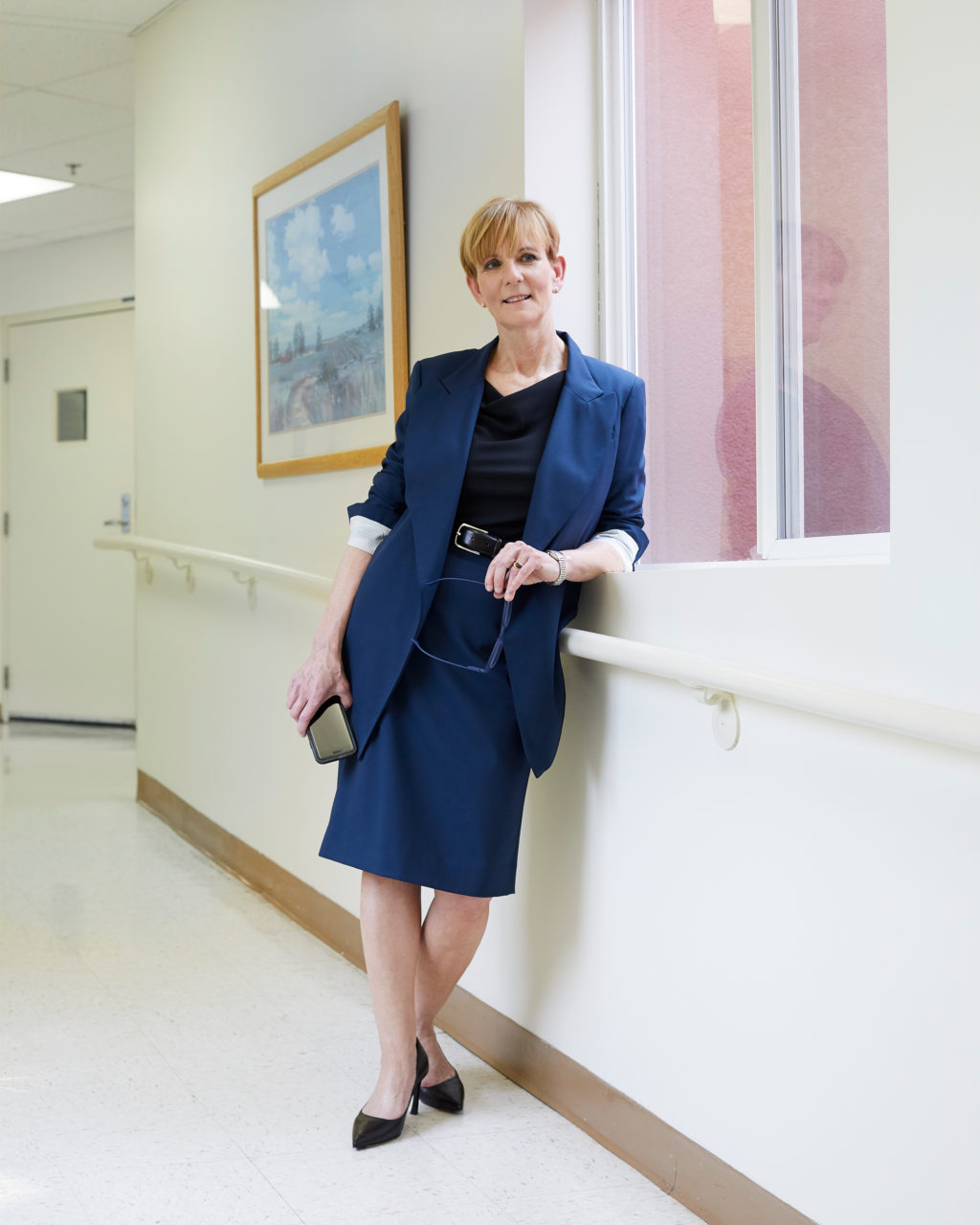
Lisa wears the Oliver jacket, the Cobble hill skirt, the Rowling top, the Wide Strap belt, and the Ginger pumps.
WHEN I WORKED IN TELEVISION, I was a producer for a guy named Bob Arnot, who was a doctor. One day, we were shooting a story about white water rafting. Bob was in the raft, and then suddenly he disappeared. We finally found him on the shore, and we watched as he pulled an elderly woman out of the water. She was completely lifeless and limp. And he spread her out on the ground and gave her CPR. He told me later that she had no pulse and was totally blue. But he gave her mouth-to-mouth resuscitation and, after a few breaths, she turned her head to the side, a gallon of water came out of her mouth, and she was back. It was crazy. I had a revelation at that moment: It was very unlikely that I would ever save anybody’s life unless I changed something. And that sat in my head for a couple of years before I got the idea to go to medical school.
WHEN I DECIDED THAT I WANTED TO BECOME A DOCTOR, I knew there was a good chance that I wouldn’t get into medical school, or even make it through the pre-med work. I took post-baccalaureate classes at Columbia while I was working full time as a television journalist. I worked an eight-hour news shift, from 2 p.m. to 10 p.m., which allowed me to take classes and study in the morning. Then I wrote what I consider to be a hell of a good essay in my medical school application, and I got into Yale, which was my top choice. I was thrilled.
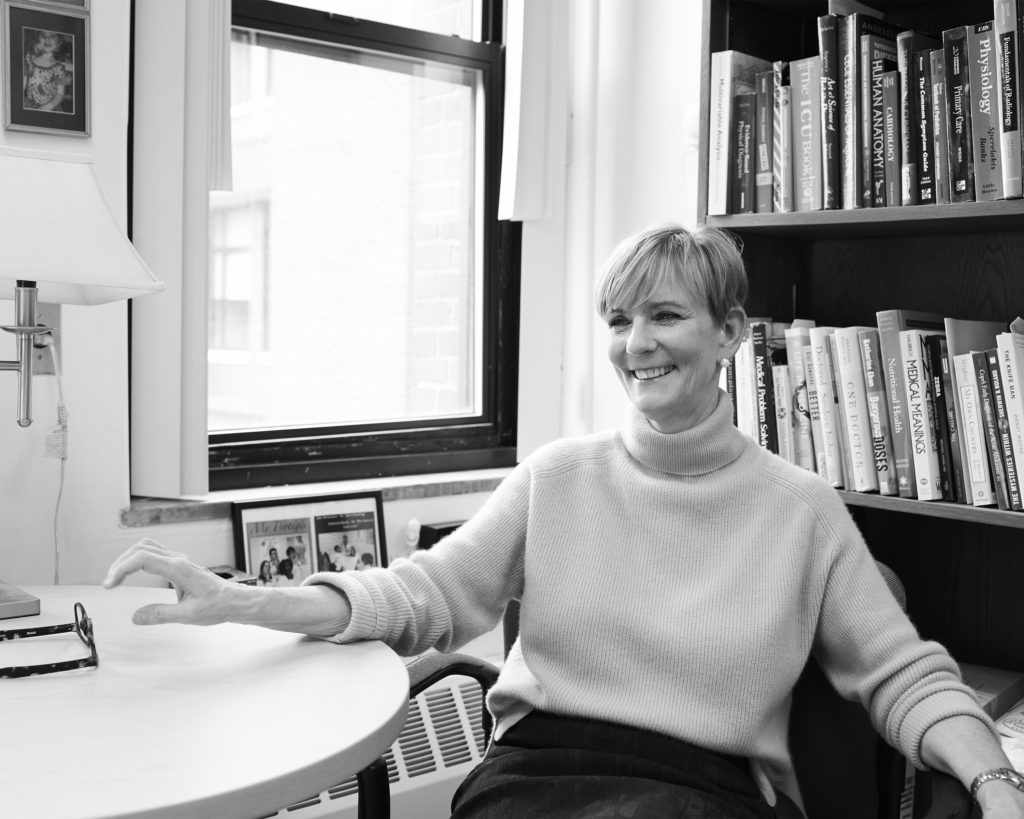
Lisa wears the Arbus sweater, the Noho skirt, and the Ponza earrings.
I STARTED MEDICAL SCHOOL WHEN I WAS 36. I got a lot of, “What are you doing, at your age? Just have children!” One guy said to me, “Don’t you think you’re too old to be taking this on?” And I said, “Sir, my grandmother died at 96. I’ll be practicing medicine when you’re moldering in the grave.” He laughed, which was what I intended. But please, are you kidding? You’re going to tell me I’m too old? How dare you.
I WAS LUCKY THAT WHEN I DECIDED TO CHANGE MY CAREER, I didn’t have a lot of responsibilities. I didn’t have a mortgage. I didn’t have children. I wasn’t married. I was doing fine, and I loved my life, but I wasn’t settled in any way. I had no obligation to anyone but myself. If you have three children and you’re the major breadwinner, then it’s going to be really hard for you to quit your job and be dependent. I had to take loans, at least for a while. Fortunately, my husband—who was then my boyfriend—was all in on this. And I certainly couldn’t have done it without his emotional support.
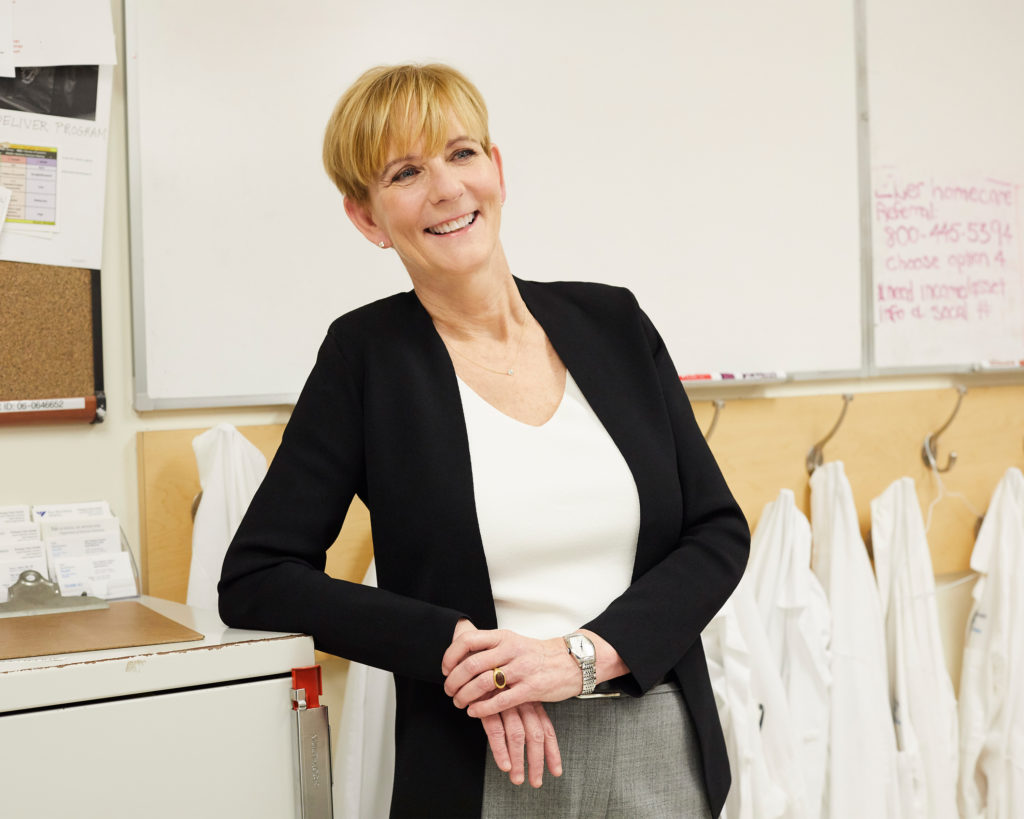
Lisa wears the Woolf Jardigan, the Peggy top, the Mejia pant, and the Wide Strap belt.
BEING A DOCTOR IS SIMILAR TO BEING A JOURNALIST in that I get to ask people anything I want to and they answer me. And in some ways, it’s even better than being a journalist, because I don’t have to go out and look for people to talk to. They come to me. It fits my personality. I’m sort of shy, but I’m interested in other people. It’s hard for me to go up to somebody and say, ”Hey, how are you? I’m Lisa.” I can fake it, but it’s work for me. And medicine and teaching give me a way around that.
WITH MY COLUMN FOR THE TIMES, I wish I could say I had this brilliant idea and everyone said, ”Yes!” But that’s not actually what happened. I had a friend who had just gotten a job at The New York Times Magazine and he called me because I was literally the only doctor he knew. He said, “I was thinking that the Times might want to do some sort of medical thing. What can doctors write?” And I said “Oh my God. We write this fantastic story every day, several times a day. It is the story of a patient and how we figure out what’s going on with them.” Sadly, he did not say, “Oh, brilliant.” He said, “Hm, maybe.” And I went on this campaign to persuade him that that was the right thing to do. I sent him all these medical journals devoted to figuring out mysterious cases, and we talked for about nine months, off and on. And then eventually, another editor called me and said, “Do you think you can give it a shot? Because otherwise we’re going to give up.” They hadn’t been able to get anybody else to write it. And I said, “Sure,” and that was my first column. It was due four days later, which was good, because it gave me less time to be anxious about it. There’s nothing like a deadline.

Lisa wears the Oliver jacket, the Cobble hill skirt, the Rowling top, and the Wide Strap belt.
I GET EMAILS AND PHONE CALLS ALL THE TIME from people asking for help with their health. Now, when people call my office, I have a message on my machine that says, “I’m not going to return any of your phone calls.” Because I really can’t return all of them, and I don’t want people to be unhappy with me or feel like I don’t care, because I do care. My number one piece of advice is to go back and find a doctor you can develop a good relationship with, who can hand you off to specialists if you need it.
I ANSWER ALMOST EVERY EMAIL. Sometimes it takes me a while to get to it, because after the Netflix show, I get about 100 emails a day asking me for help. When I was just writing the column, I used to get maybe five to ten. I have about a dozen form letters that I use to respond, and I try to adjust them a little bit to address exactly what each person is writing to me about. I write back because these people are in trouble, and we have a medical system that has abandoned them. And nobody is telling them how to work within that system to get what they want. I feel like that’s my job. I devote an hour in the morning to emails and, if necessary, an hour at night; it comes out of my “free time.” But I have it to give. Both of my children have graduated from college and have jobs and are out in the world. They are launched. My only goals for my children were that they should be independent and happy. And they’ve done a lot more than that, so—goals achieved. I knit a lot less now, though. The emails have really taken a toll on my knitting.
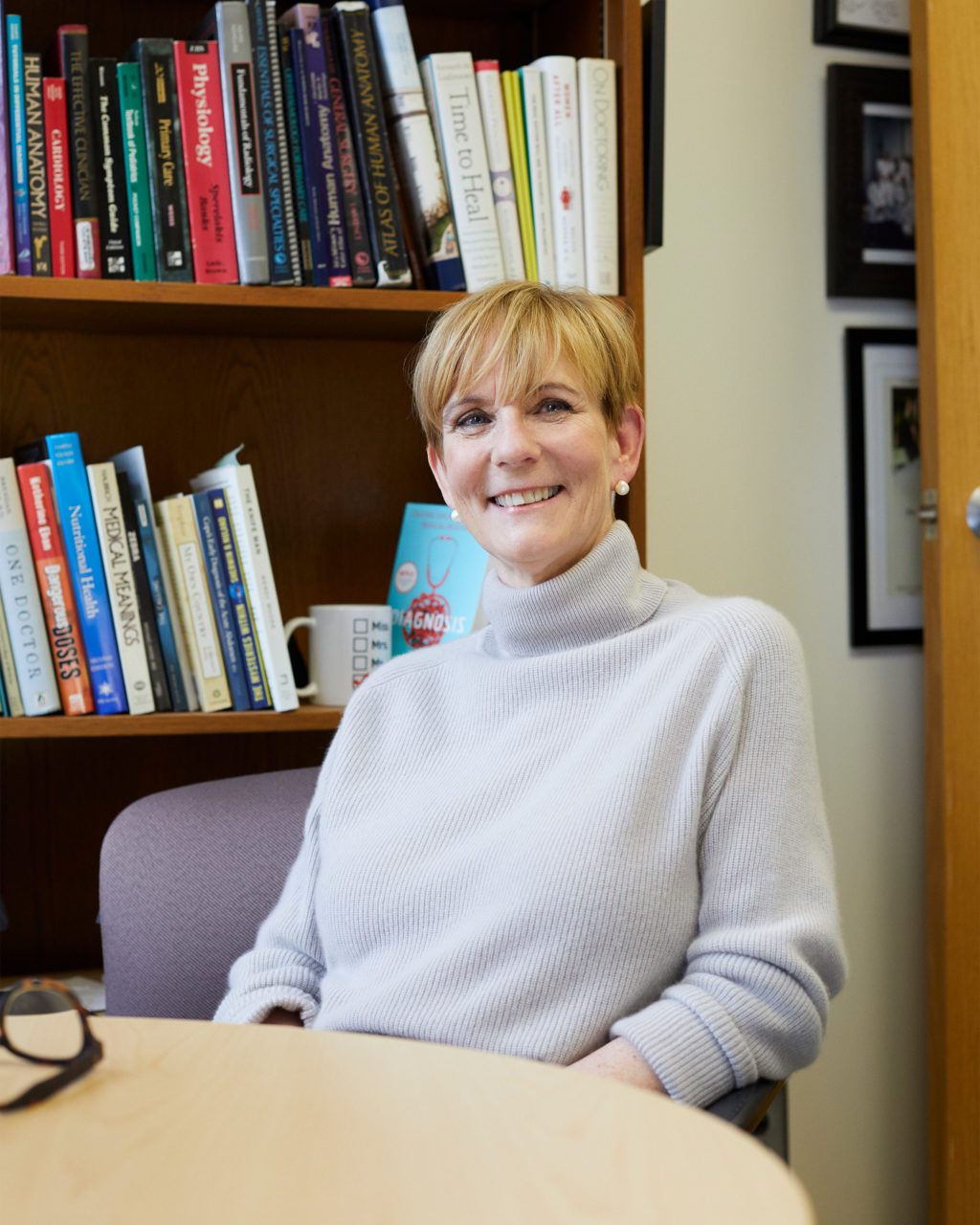
Lisa wears the Arbus sweater, the Noho skirt, and the Ponza earrings.
ON A NORMAL WEEK, I TEACH AT YALE TWO OR THREE DAYS at the most. And then the other days I reserve for research and writing. Also, for eight or ten weeks of the year, I attend on the wards, which means I take care of patients who are in the hospital because they’re very sick. And that’s intense, like 14 days straight. I usually end up doing a lot of writing on the weekend, because that is when I have the most uninterrupted time. But I have to do the research and interviews for my column before that. Fortunately, I have two brilliant Yale medical students who are my research assistants. Thank God, because I turn these columns in every other week.
WHEN I COME HOME AT NIGHT, I TRY NOT TO DO ANY WORK. I give myself that. I’ll get up at 4:00 a.m. to work if I need to. But at the end of the day, I am done thinking or being creative. I certainly cannot write. I spend that time with my husband. We love to cook, so we often cook together and just hang out. Even though we’ve been married for 30 years, it’s still incredibly important. There’s very few things that I would rather do than spend time with my husband.
IN TERMS OF MY PHYSICAL HEALTH, both my husband and I belong to a gym, and we exercise at least three times a week—Monday, Wednesday and Friday. I also do intermittent fasting. It just works. I don’t know that it’s healthier for you, or does anything special. But you know what it does do? It cuts down on the calories you take in that day. If you don’t eat them, they don’t come.
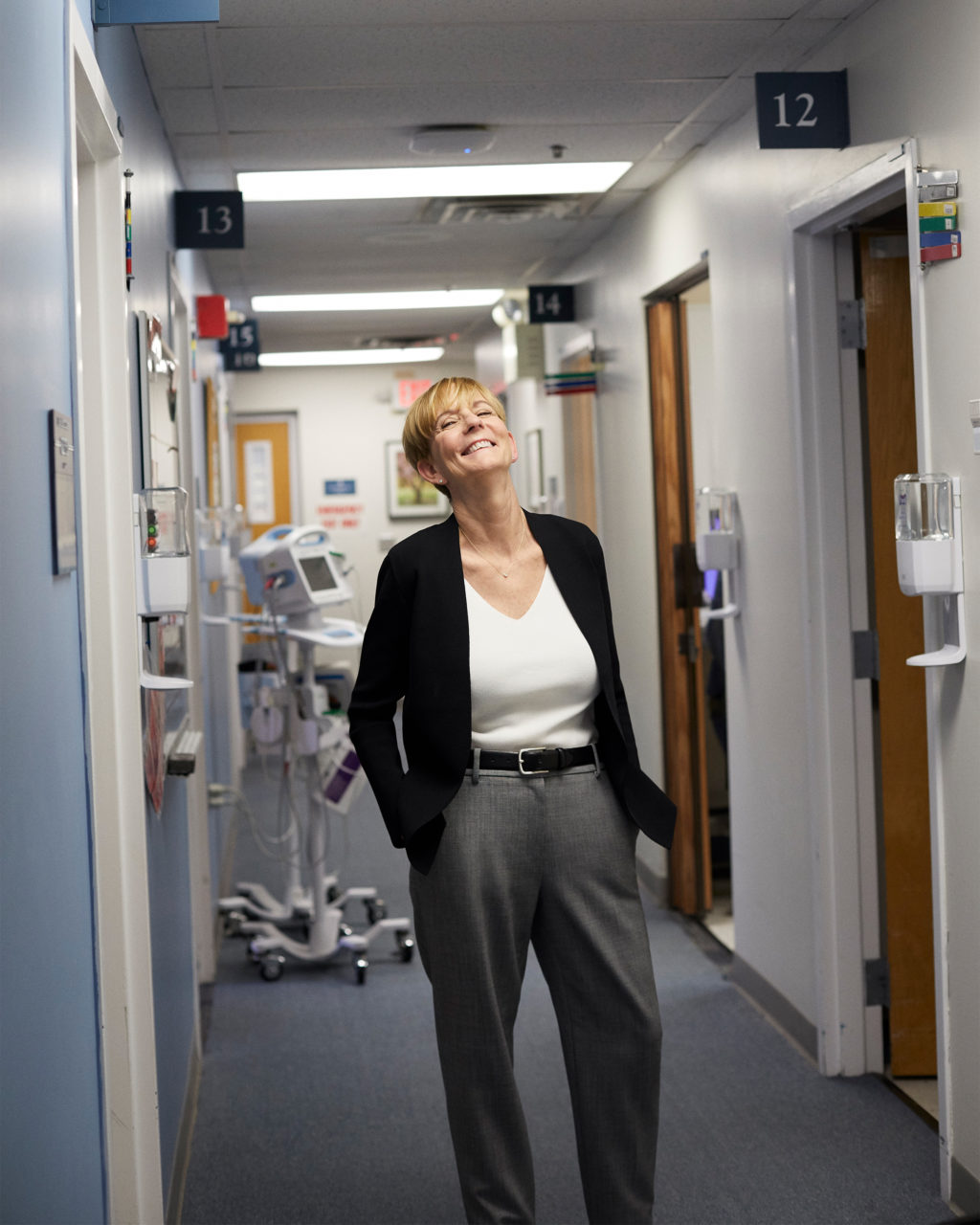
Lisa wears the Woolf Jardigan, the Peggy top, the Mejia pant, and the Wide Strap belt.
MOST OF THE PATIENTS I SEE NOW have what many of the people in the world have: high blood pressure or diabetes. Or they have a cold or their back hurts. Or they have a headache. I used to mostly see patients who had bizarre illnesses, but I don’t anymore. I made a rule that I don’t see anybody who’s not from my community in New Haven, Connecticut. Because otherwise, people are going to think, “What, am I not sick enough to see her? I’m not interesting enough?” I’m very careful to protect my patients. That’s why I became a doctor in the first place.
I TRY NOT TO GET BENT OUT OF SHAPE about things I can’t fix. My best friend, the guy I quit smoking with, taught me that. Whenever I would rant about something, he was my go-to person. And he would just look at me and say, “You want to rant? I got ten minutes. Rant. Then do you want to do something about it, or do you just want to rant? Eyes on the prize.” You really have to feel the power to say, “Okay, I can get upset about this, or I can just fix it.” People have to learn how to say this to themselves. Some people learn it, and some people don’t.
Want to nominate a Woman of the Week? Email us at womanoftheweek@mmlafleur.com.
Photos by Anna Bauer.
Styling by Nyjerah Cunningham and Sarah Holt.





